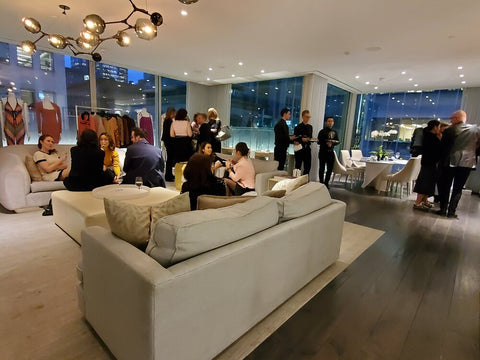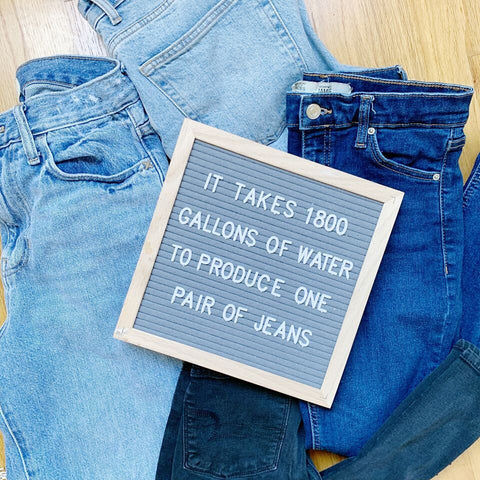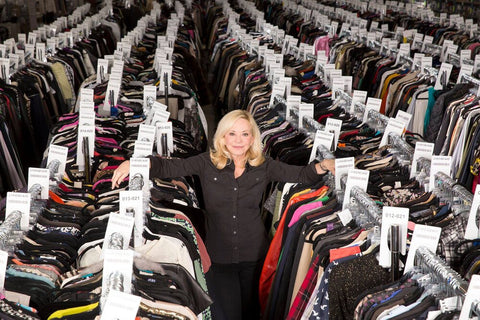The Rise of Pre-Owned Luxury Fashion Marks Shift Amid Sustainability Movement

For the fashion industry, the movement towards buying luxury, secondhand, vintage, and neo-vintage represents a form of alternative fashion consumption. It’s one that meets the expectations of consumers looking to elevate their social status by acquiring pieces that are rare or carry status at a lower price-point.
Luxury resale – buying and selling of preowned luxury goods – is a booming business that is fueled by digital selling platforms like Vestiaire Collective, Fashionphile, Chrono24, Watchfinder & Co, and others. Early adopters such as The RealReal and 1st Dibs have expanded into retail with consignment stores specializing in luxury proliferating, and thrifting has developed caché.
Four Resale Drivers
Luxe Digital Online identifies the four main drivers of luxury resale growth as digital, affordability, collectability, and changing consumer preferences towards sustainability and experiences. In this new context, secondhand shopping is perceived as a responsible way for new affluent generations to acquire unique items without the negative impact of buying fast fashion. Luxury brands have an advantage over fast fashion retailers – all ages purchase luxury products for their longevity and prestige.
Secondhand vs. Luxury Vintage
Before this desire of the ‘woke’ generation to embrace resale, there was a mainstream fascination with vintage luxury that can be traced back to 2001 where both Renee Zellweger (Jean Dessès and Julia Roberts (Valentino) dressed in vintage for the Academy Awards. The wearing of vintage at such a high-profile event thrust secondhand fashion into the spotlight and celebrities embraced this new avenue of individuality.

The following spring, a vintage Azzaro that was purchased from Decades, Inc., in Los Angeles, was worn by Nicole Kidman when she attended the New York premiere of Moulin Rouge, and the next morning she and the dress were on the cover of WWD.

The founder of Decades, Inc. and self-proclaimed 'King of Vintage' Cameron Silver recently collaborated with Holt Renfrew to create a private shopping event in Vancouver, at the exclusive 'The Apartment' shopping floor.

Silver, who has established himself in North America as the face of luxury vintage, was named one of Time Magazine's "25 Most Influential Names and Faces in Fashion" in 2002. He went on to star in one of the first Los Angeles-based reality series Dukes of Melrose. In 2012, he won the Visionary Award from The Art of Elysium and published a coffee table book aptly entitled Decades: A Century of Fashion (published by Bloomsbury) that sold-out within 48 hours.
The Holt Renfrew event is evidence that the collective mentality towards secondhand of any origin, is changing. There was a time, even five years ago, when the notion of a luxury department store entertaining the idea of inviting a non-designer to sell vintage luxury to their VIP clientele would have been scoffed at.
Now in 2020, Silver is observing the resurgence of secondhand and vintage shopping with the satisfaction in knowing that he played a part in this movement - one that is gathering momentum as the world realizes that we all need to act to slow down the destruction of our environment.
"The icons of the past always repeated looks, and one can't fight for a ban on plastic straws if one thinks showing up in the same top twice in their IG feed is a fashion violation. It is both "chic to repeat" and "the best new clothes are old clothes," but I am also encouraged by new designs and an embracing of sustainability."
Silver's messaging hasn't changed; the difference is now, people of all generations are listening. "As we enter the second decade of the 21st century, distinctive style is through a medley of vintage and modern, high-end and accessible brands, tailored and sports styles, and an embracing of repeating and repurposing what already exists in your closet."
Sustainability Making Financial Sense
ThredUp published figures indicating the current market is $24 billion with a projected jump to $51 billion by 2023. Forbes Magazine predicts that by 2025, sales of the non-traditional luxury items, like sneakers, could reach $6 billion. In 2019, the figure was $2 billion. There is a momentum that cannot be ignored.

Last summer, 32 companies (fast fashion and luxury) signed a 'fashion pact' that included a pledge to combat greenhouse gasses and emphasize sustainability in the industry. Chanel, Prada, Ralph Lauren, H&M Group, and Zara promised to play its part in reducing the textile industries alarming carbon output. For consumers, shifting away from buying frivolously towards buying items of quality with resale value, is the next surge that luxury retailers are banking on. Secondhand fashion is predicted to overtake the fast fashion market by 2029.
How Does the Industry Move Forward?
When addressing the flourishing online/offline retail offerings, Silver says, "There is a distinction between a sole online luxury resale experience and the hybrid retailers with both brick and mortar and digital commerce components. Making pre-loved luxury accessible is wonderful, and the proliferation of online retailers has increased interest, and the growth of the market reflects this. However, the discerning shopper enjoys a visceral experience when procuring vintage and archival fashion, which is difficult to replicate through e-commerce."
The merging of brick-and-mortar retail and resale has been creating exciting collaborations. In 2017, Hudson's Bay welcomed LXR&Co. In 2018, The RealReal opened two retail outlets, and in 2019 Vestiaire Collective opened a dedicated boutique in Selfridges department store in London. Burberry joined forces with The RealReal, and Audemars Piguet is experimenting with trade-ins of the brand's old timepieces in Switzerland. At the same time, Rolex has filed a lawsuit against La Californienne over 'altered' watches which they now claim are 'counterfeit.'

The fashion industry along with the luxury and secondhand markets, combined with an abundance of young consumers thirsting for the next big thing, has created a bit of a free-for-all atmosphere where consumer protections and laws have yet to be written.
2020 will be an interesting year as Millennials and Generation Z are predicted to continue to generate 85 percent of global luxury sales and expect luxury brands to be aligned with their values. Many luxury brands are still dipping their toes into the luxury resale market and it will be interesting to see how the top labels approach this market.
One thing is clear though, consumers of all ages have indicated that supporting the resale market is something that they are very keen on and any brands not moving in that direction, will very possibly be left behind.
Great blog by Helen Siwak
